Tamil nadu is known for its ancient cultural heritage. Tamils all over the world ar proud of the culture of Tamil Nadu and take great efforts to safegaurd and practise their cultural traits. A distinct ethnic group with a history dating back to Sangam era (from 400-300 B.C.E to 300 CE), Tamils are either Saivites or Vaishnavites segment of Hindu pantheism. Their literature can be traced to the grammatical treatise 'Tolkaapiyam' written around 500 B.C.
While a majority of Tamils are Hindus (88%), Christians forming 6% of the population and Muslims (5.57%) live in harmony and have their own places of worship and festivals to celebrate. Lord Muruga is the chief deity of Tamils and its six abodes are pilgrims centres located in different parts of the state.
During the reign of Cholas, Cheras and Pandyas, a number of temples and public utilities like dams and irrigation tanks were built which are still being used after minor renovation.
If you imagine 'South Indian Food', first things which pop in mind Idli, Dosa, Sambhar, Vada, Upma and what not. It's a typical Madrasi Food for North Indians. Tamil Food is popular in both vegetarian and non-vegetarian contexts. Otherwise, rice, lentils, grains and vegetables from the main ingredients in Tamil Cuisine. Rice is a staple food here. Sambhar and Coconut Chutney are served with almost everything and guess what, it makes a fine blend with most of them. For non-vegetarians, fish, turtle, mutton and venison are preferred. Some Tamilians follow the tradition of eating on Banana Leaf even today.
. 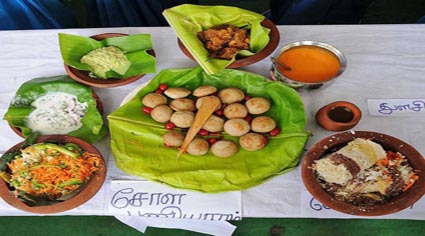
|
|
Men can be seen wearing a Lungi with a shirt and Angavastra. Lungi is a rectangular cotton cloth tied across the waist, and Angavastra is a cloth draped around the shoulders. It can be worn over or without a shirt. Some people may also wear dhoti which is a long form of Lungi, the bottom of which is mostly stuck at the waist. Men also wear Vibhuti on their forehead.
Tamil Nadu women mainly wear Saree which is a five to six yards rectangular cloth made of cotton, silk or any other fabric. The prints, design and style depend on the fabric and community rituals. Kanchipuram Saree is often worn at the time of festivals. Young girls wear half-saree which includes a blouse, long skirt and a dupatta from the waist to the shoulders. Nowadays, salwar kameez and even western wear are preferred.
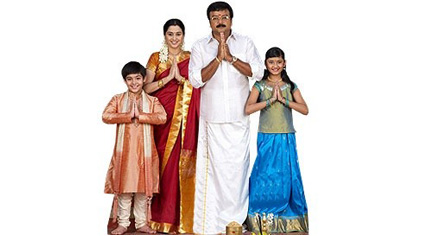
|
|
Tamil Music has evolved over the years. The most important form of music was the Carnatic music which considered only for the elite who could understand the intricacy of music. For others, Telugu songs and a mix of traditional numbers from a source of entertainment.
Bharatnatyam is the official dance form of Tamil Nadu, recognized all over India and the world. It's a complicated dance form with subtle moves of body parts and expressions. Some other folk dances like Parai, Villupattu Karakaatam, and Kuthu are also performed by local people including tribal people.
- Karagaattam. Karagaattam is a popular folk dance of Tamil Nadu, which involves balancing a pot on the head with musical accompaniment. ...
- Kaavadi Aatam. ...
- Poikkal Kudirai Aattam (Dummy Horse Dance) ...
- Bommalaattam or Puppetry. ...
- Therukoothu, Silambaattam.,Villu Paattu.,Snake Dance
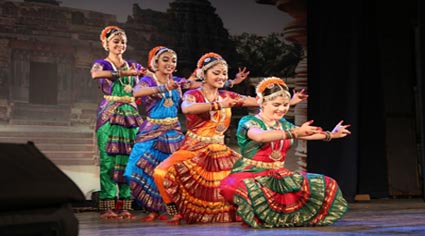
|
|
Tamil Nadu has been a pilgrim’s favourite for ages. This southern state of India is frequented by people seeking spiritual awakening and transformation. Travellers from across the world embark on a journey to Tamil to revel in the religious festivities. Festivals of Tamil Nadu take place throughout the year, from Pongal to Sivarathri, Good Friday to Janmashtami. Here is a list we compiled.
- Pongal. This is the most important Harvest festivalcelebrated by the people of Tamil Nadu. ...
- Tamil New Year's Day. ...
- Natyanjali Dance Festival. ...
- Thaipusam. ...
- Mahamaham Festival. ...
- Thiruvaiyaru Festival. ...
- Karthigai Deepam.
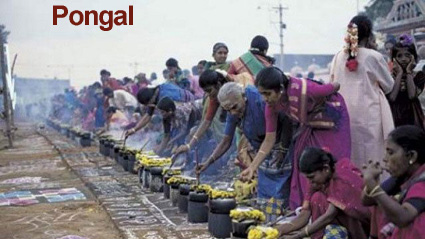
|
|
Tamilians have perfected the art of spinning, weaving and chiseling over the years and their brilliance is reflected in different art subjects like bronzes, sculptor works, carvings, etc. Magnificent temples represent Tamil architecture with lofty ?gopurams? and statues of goddesses engraved all over the edifice. Many well-known temples such as Meenakshi Amman Temple and Breehadeeshwara Temple are located here which displays a grand vista of ancient Hindu mythological diversity and Tamil heritage.
With a golden history of some great rulers and dynasties having ruled the state, it?s not surprising to find such splendor in architecture, literature, and traditions. People of Tamil Nadu have a great legacy to live up to. The culture and traditions have been safeguarded by them over the years and are manifested till today in full vibrancy.
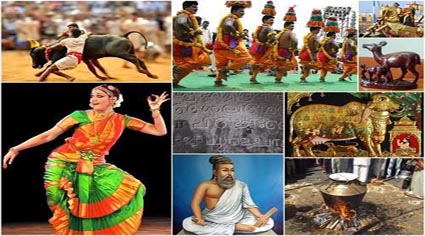
|
|
There is ample mention of the exquisite arts and crafts of Tamil Nadu in the chronicles of Pliny, Kautilya and other scholars who marvel at the states fine silk, soft muslin, ornate ivory work and precious stones like diamonds, rubies, pearls and tortoise shell. Tamil Nadu, resting at the pinnacle of ancient culture was the erstwhile kingdom of the Pallava, Pandya and Vijayanagar rulers and has ample relics that testify the architectural grandeur and the cultural efflorescence of the period.
- Paintings. The Tanjore paintings are a hallmark of India's rich cultural legacy. ...
- Stone Carving. ,Woodcraft. .,Jewellery. ...
- Making musical instruments. ...
- Pottery.
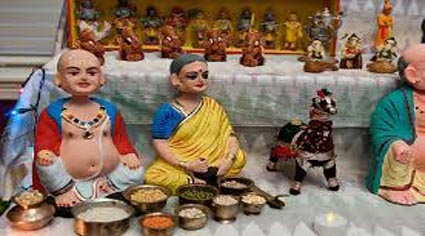
|
|







